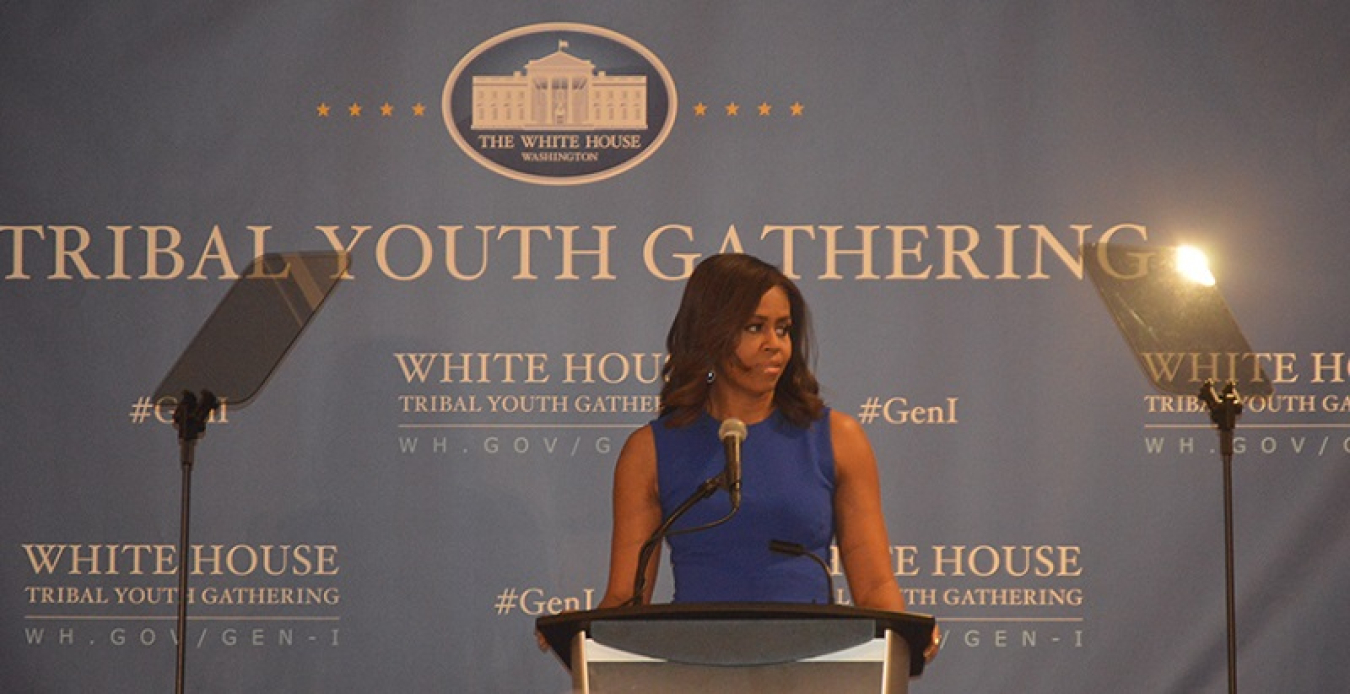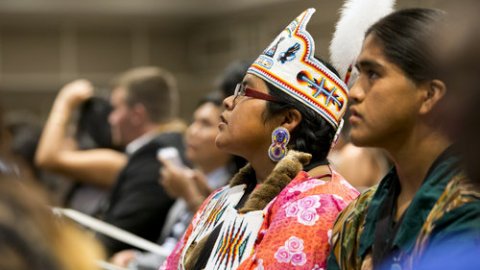On July 9, the White House hosted the inaugural Tribal Youth Gathering in collaboration with United National Indian Tribal Youth (UNITY) and the De...
Office of Indian Energy Policy and Programs
July 15, 2015
The Youth Gathering builds on the President’s launch of Generation Indigenous (Gen-I), an initiative to help improve the lives of Native youth and to cultivate the next generation of Native leaders. Gen-I includes new investments and policies to expand educational, employment, and health and social services for Native youth and also strengthens the Administration’s engagement with Native communities to improve outcomes for all youth. With a substantial proportion of the American Indian and Alaska Native population under 24 years old—42% compared to 34% of the total population—and a significant percentage in the 15–19 age group, there is a critical opportunity to create a brighter future not only for youth in Indian Country, but for youth across the entire nation.
In conjunction with the Youth Gathering, the Administration announced commitments to continue to support Native youth, including:
- Urban Tribal Environmental Program: For the first time this summer, the Environmental Protection Agency’s (EPA) Region 1 Office will partner with tribes located in New England to pilot a high school student summer learning experience for Native youth to shadow Native American environmental staff for eight weeks. Native youth will gain experience in field sampling and analysis, laboratory methods, and data interpretation.
Indian Community Development Block Grant: The Department of Housing and Urban Development (HUD) will publish its Notice of Funding Availability (NOFA) for 2015. The NOFA will make approximately $59 million available for a wide variety of community development purposes, including group homes, community centers, and Boys and Girls Clubs.
Indian Housing Block Grant: In Fiscal Year 2015, HUD allocated over $650 million to address overcrowding in low-to-middle-income housing and to also build and maintain safe houses, transitional housing, and group homes, among other matters. Reductions in overcrowded living conditions positively affect residents’ health and young people’s performance in school.
To view the full White House Factsheet, visit their website.



